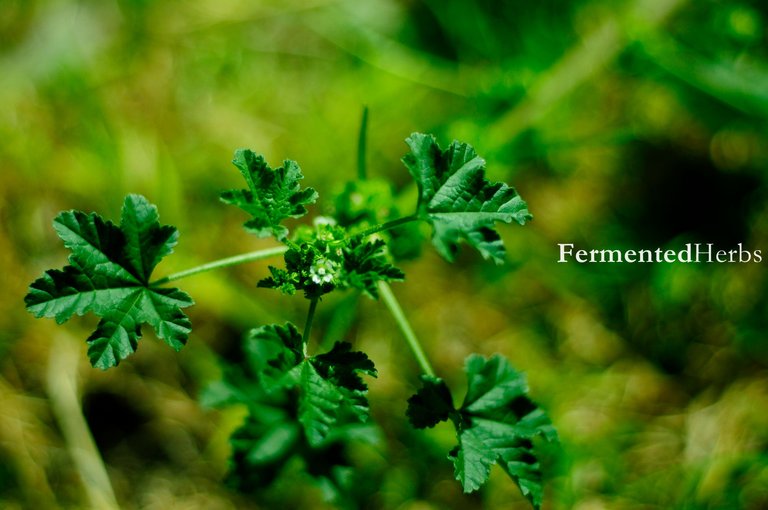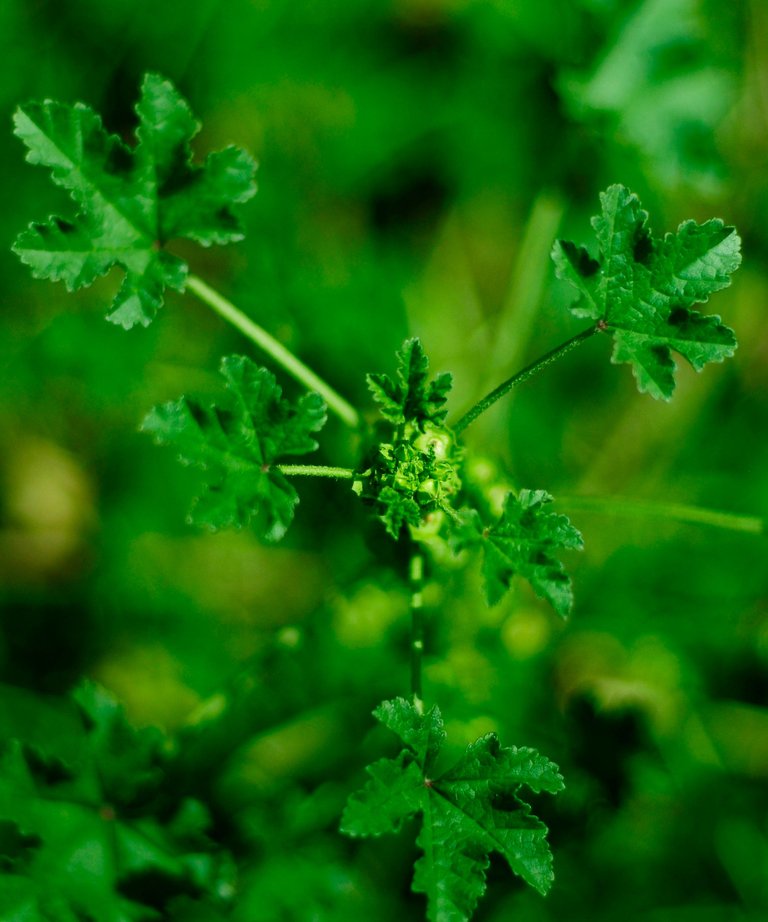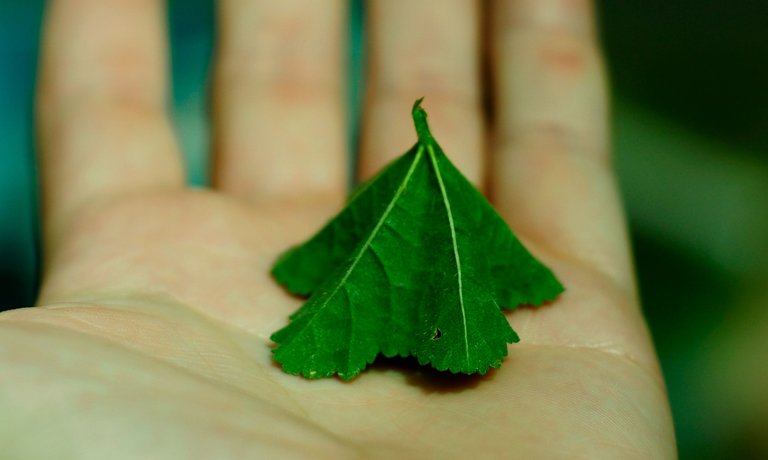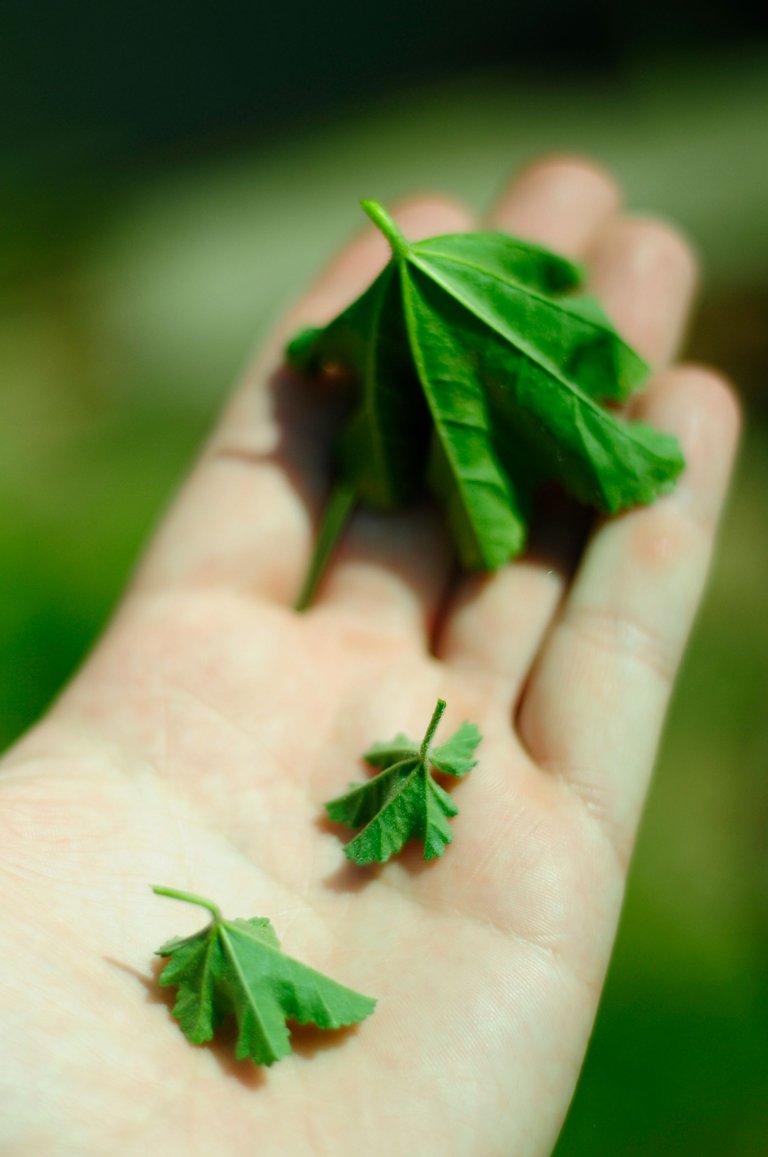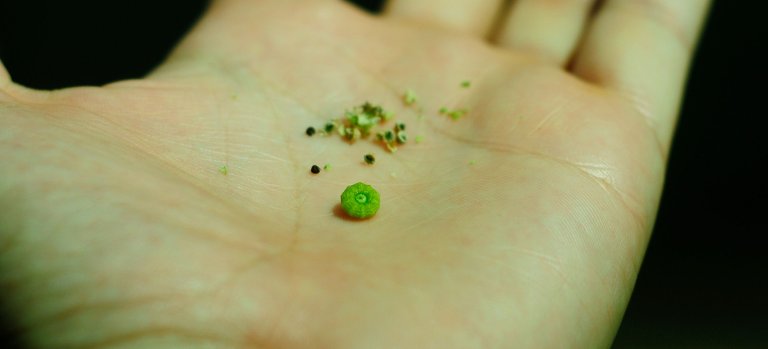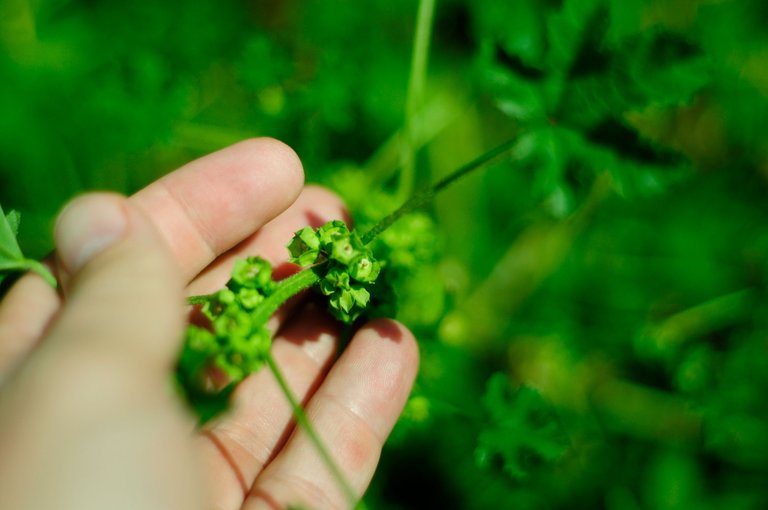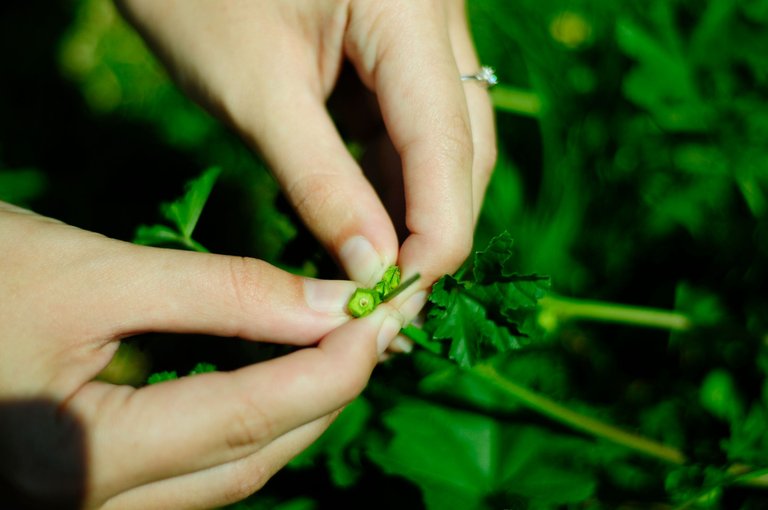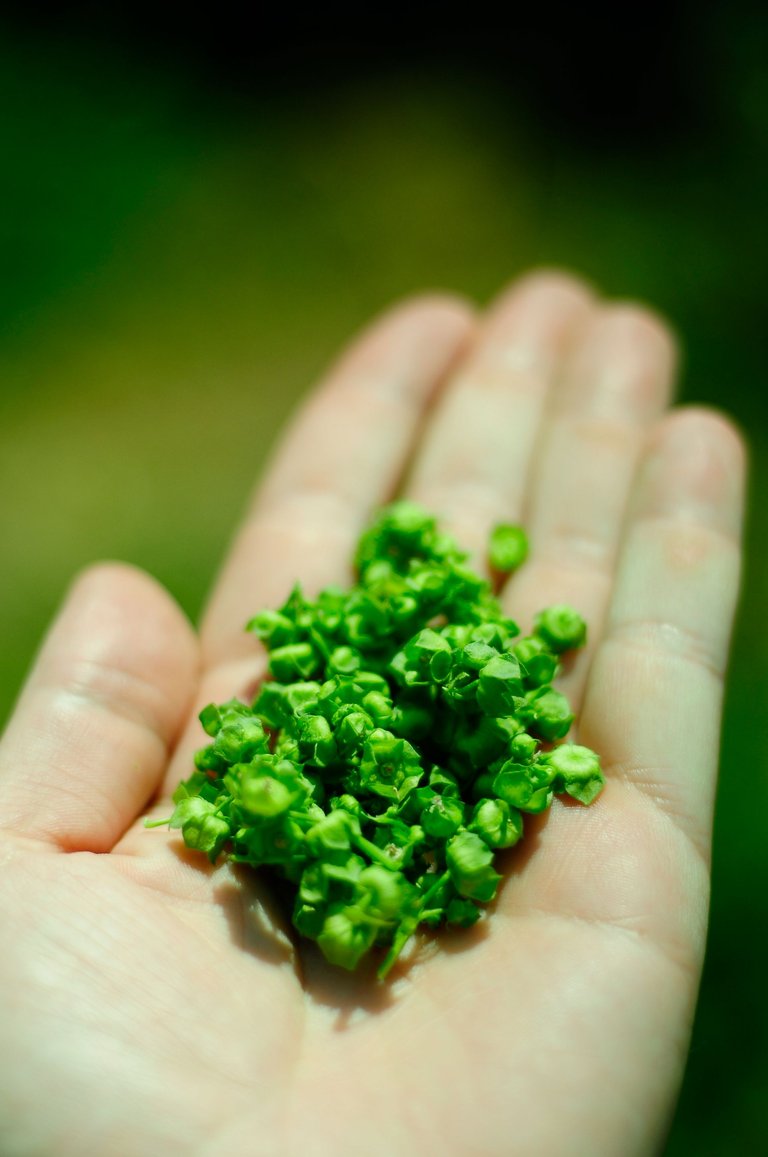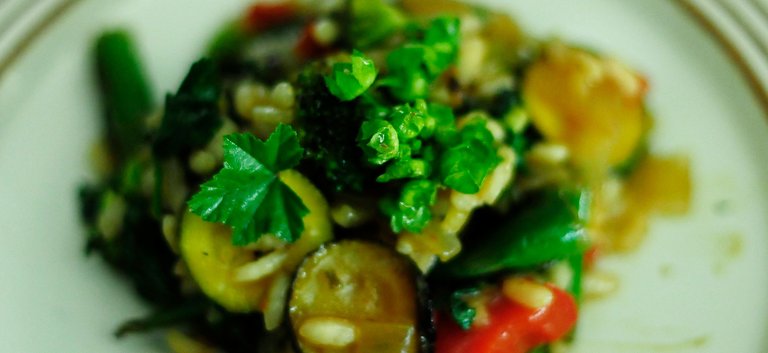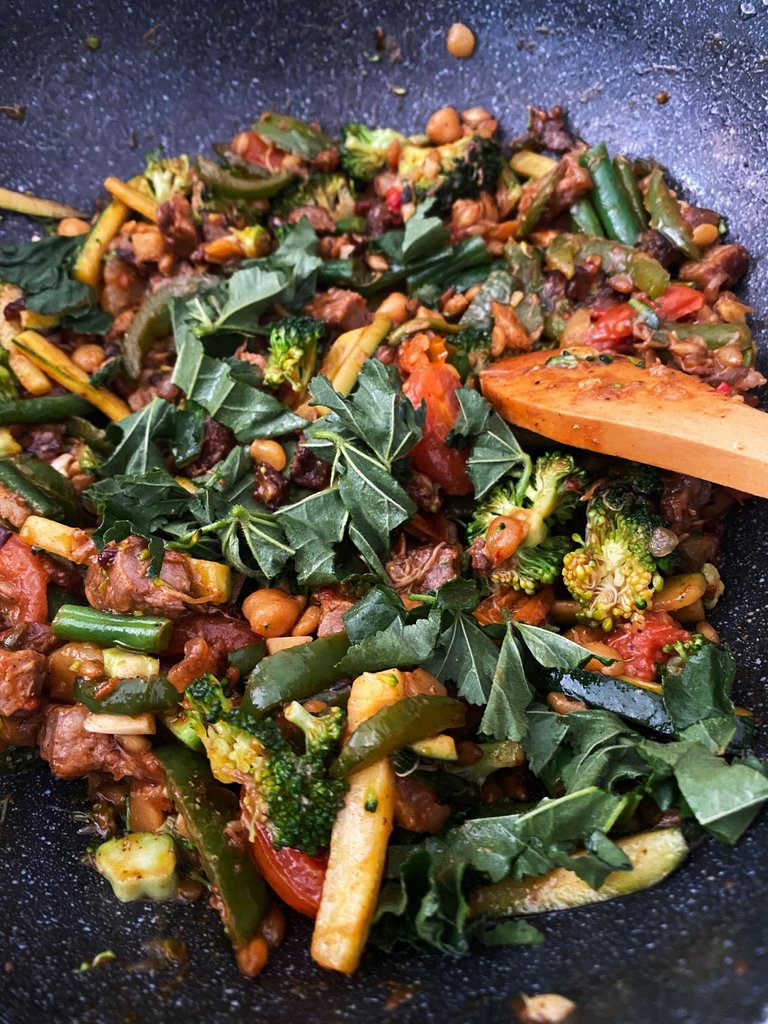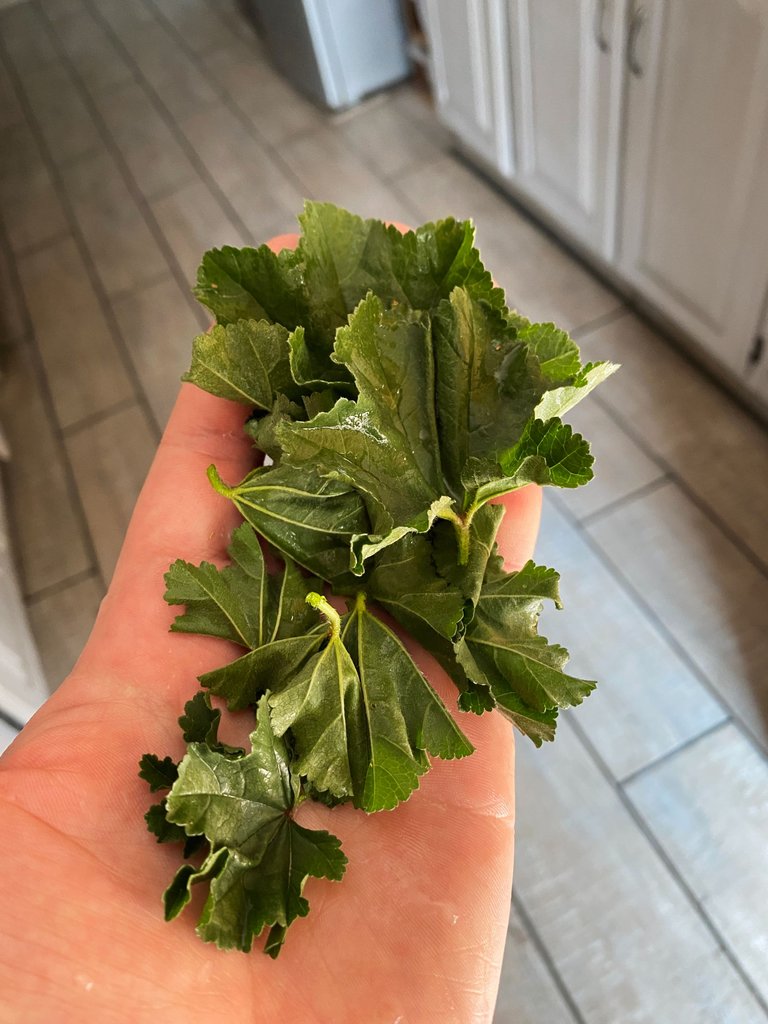I always walked past this plant and instinctively knew its worth; I knew it was the wild variety of Okra plants. But I never had some growing in my garden; until now. The small white flower is delicate amongst the many seedpods. The leaves have a distinct shape, especially in relation to the whole plant. If you have walked past one of them you know what I am talking about. One random stalk growing upward, the rest growing sidewards. The thousands of seed pods clump tightly where the leaves stem outwards. And those distinctively long stems with the five-lobed leaves.
I am obviously talking about the common cheese wheel mallow (Malva Neglecta and/or Parviflora).
Okra and Mallow: The Same Slimy Situation
Similar to purslane and okra, the common mallow when used in food can have a slimy texture. But one should rather see this as a positive in the sense that it can bind sauces and foods. Obviously not as bad as in the case of purslane, but it still might be too slimy for people who do not like this texture.
But as some have noted the ability of this slimy texture to bind smoothies! So if you are into green smoothies, similar to bananas, common mallow might help with making the smoothie creamy; fruits that might separate in the process of blending can actually emulsify better.
Identifying: Leaves
The easiest way to identify the common mallow is probably through its leaves. The long stem is an easy giveaway, but the five lobes are also a characteristic. The leaf itself is sometimes a little hairy but it has clear and multiple midribs running down the back of the leaf. The margin of the leaves is also ribbed or ridged.
The leaves also come in different sizes, from very small to really big. In previous posts, I have talked about the different health properties of leaf shapes and sizes. But I think it is relatively common knowledge that smaller leaves might contain more nutrition compared to the larger ones; as the leaves get older they are less and less of a benefit to the plant and the growth of the seeds.
Interestingly, when you pick the leaves, they break off from the base of the plant. The long stem, in other words, comes off the whole plant. Some have speculated that it is to help the plant from not getting hurt when someone like us harvests from its leaves.
Seeds and Flowers
The seed pods are also one of the other characteristics to identify this plant with; the cheese wheel shape, hence the name, is a dead giveaway that you are dealing with a malva or mallow. When you take the outer peel/husk off, the seed looks like a cheese wheel!
In the back, the dried-out seed pod produces various seeds. The green seed pod, when de-husked, produces the characteristic cheese wheel shape. These seed pods are also perfect for consumption and produce a crunchy and fresh-green taste. I add some sugar and lemon juice and quickly pickle them for the perfect topping to things like a salad or in my case a risotto. But more on this below.
These plants are mostly seen as weeds in the West because of how many seeds they produce and spread. This is evident from the various seed pods it produces on the plant, a staggering amount!
It is thus important to control these plants especially if they are not native to an area. Luckily, as I noted, the seed pods are safe to consume. It becomes important to limit their spread by either harvesting the seeds or by eating them before they dry out and spread!
I asked @urban.scout to help me harvest some of these seeds for our risotto dish. It is staggering just how many seed pods you can harvest from a single plant. I did not even harvest that hard, I just picked some of them:
Health and Nutrition
According to some sources, the nutritional benefits of the common mallow are especially high in terms of
"vitamin A, vitamin C, calcium, magnesium, potassium, iron and selenium"
But I am not one of those to advocate eating plants for their nutritional context exclusively, but instead to treat it as a medicine cabinet for everyday consumption. Prevention is better than cure, they say. In terms of food, this in my mind is especially the case for eating plants that have been seen in past as medicine. All the better when you consume these plants then on a regular basis!
Cooking with Malva
A couple of days ago, I shared my recipe on how I cooked risotto using malva. I used the seed pods in a quick pickle and I added some of the leaves to the final product which was creamy and perfectly smooth.
[Image source: I used it in this post. I share it here just to show the pickled seed pods.]
I also just throw a handful of leaves into stir fry or stews. In this chickpea and lentil stir fry, I added the leaves which gave the final dish a smooth and rich flavour and texture.
Postscriptum, or Carry on With Caution
As with most things in terms of herbalism, proceed with caution. DO NOT eat anything you have not positively identified. Start small and slow. Add some to your diet and see how your body reacts. Do not consume anything you do not know the growing conditions, as these plants might store harmful compounds in their leaves and seeds.
But experiment and see how much you like these plants and herbs. They are nutritious and healthy in moderation.
Let your food be your medicine.
Stay safe, and happy harvesting!
The information in this post is based on my own experiences. Links and references to original information are made. The photographs are also my own, taken with my Nikon D300. One image was used previously, as mentioned.
